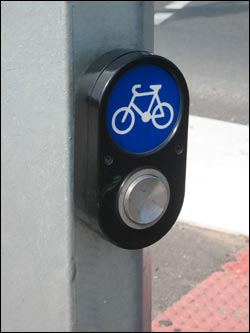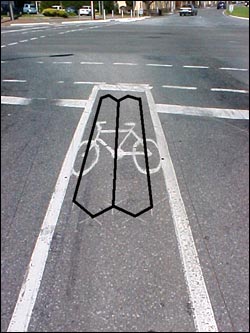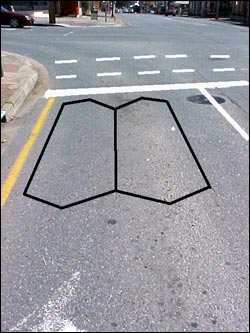
Find out the ways for a cyclist waiting at an intersection to prompt the signals to change.
Cyclist push buttons
Cyclist push buttons operate in the same way as pedestrian push buttons and are often installed next to the kerb or on traffic signal islands.
Pushing these buttons will register your presence and prompt the signals to turn green allowing you to enter the intersection legally. Some contactless push buttons at intersections to reduce unnecessary stopping for cyclists in the Adelaide city centre.
There are more than 230 intersections with cyclist push buttons in Adelaide.
Bicycle lane metal detectors

Metal detectors located in the road surface behind the stop line of a bicycle lane can detect cyclists.
The detector is activated by any conductive material such as aluminum, steel or titanium. One or more of these materials are detectable in almost all bicycle wheels.
Make sure you position your bicycle in the middle of the bicycle lane just behind the stop line so a detector can register your presence.
Bicycle lane detectors loops are located at some intersections in Adelaide. When a cyclist is detected by a bicycle-lane metal detector or a cyclist push button, the green signal is activated longer than for a motor vehicle so cyclists have more time to safely proceed through the intersection.
Metal detectors in vehicle lanes

Intersections without cyclist push buttons or cycle detectors can register the presence of bicycles using motor vehicle metal detectors.
Position your bicycle in the middle of the lane — preferably on the centre wire which is the most sensitive part of the detector — and remain there until the green signal appears.
Moving off the detector will cancel a request for a green signal.
If a vehicle approaches you may want to move to the left side of the road to share the lane - if you do this ensure that you leave enough room so the vehicle stops over the detector.
A signal change activated by the vehicle will give you the same amount of time as vehicles to cross the intersection.

